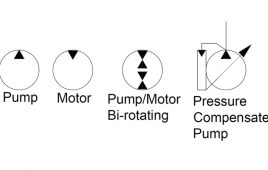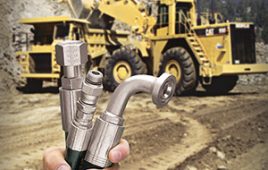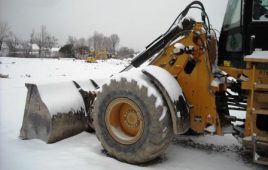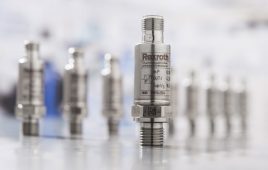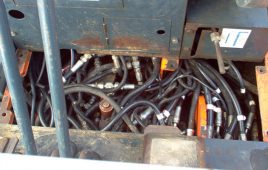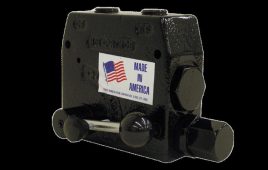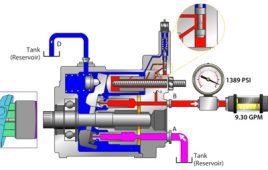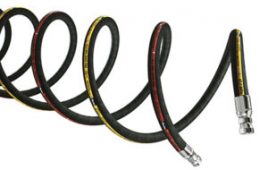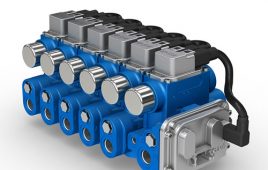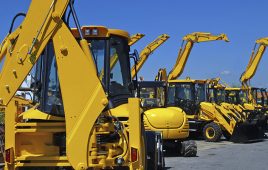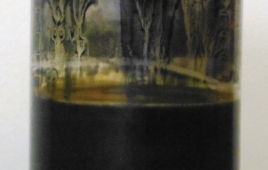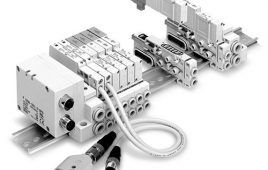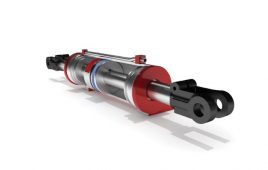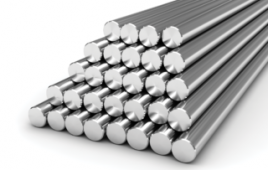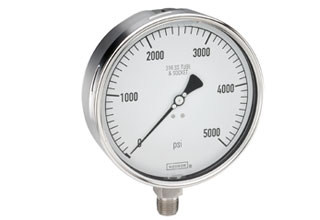By Josh Cosford, Contributing Editor Out of any topic under the patio-sized umbrella of fluid power, hydraulic symbology garners the most requests from those wishing to learn more about fluid power. Reading any schematic with more than three symbols can be daunting if your experience is limited. But it’s not impossible to learn. In fact, […]
Top 7 pro tips to improve your hydraulic knowledge
Nobody is born with innate knowledge of fluid power. It’s a tricky business, and is sometimes difficult to learn, especially if you don’t have an engineering background. The basics are clouded with misinformation, and even when you’re past the basics, there are infinite combinations of hydraulic components, requiring a deep understanding of not only each […]
Mobile hydraulic machines prove their worth in extreme environments
By Josh Cosford, contributing editor Let’s face it, the world can be an extreme place. In the past decade, it appears the world is becoming exponentially more extreme, especially environmentally. The cold seems colder, the hot seems hotter and the wet seems wetter. I’m lucky enough to live in a part of the world experiencing […]
2017 Canadian Fluid Power Association Annual General Meeting wrap-up
The Canadian Fluid Power Association strives to further the fluid power industry, and during 51 weeks of the year, we focus on education, market insight, fluid power careers and industry cooperation. But over a few days in the late spring, we mix it up with our peers in a mosaic of business, networking and straight […]
Demystifying transducers in fluid power
Transducer is a mystical word. Saying it emotes feelings of the word transmogrify, which itself describes the magical transformation of an object or person. The word transducer was certainly a mystery to me when I was a fluid power neophyte. I knew a transducer was some sort of electrical device, but I didn’t know how […]
What is flow sharing?
By Josh Cosford, Contributing Editor Flow sharing is a method of pressure compensation allowing all channels of metered fluid to take proportional allocation of flow regardless of total pump output. Flow sharing prevents fluid from taking the path of least resistance. To explain, first consider that you have two directional valves with flow controls plumbed […]
Why should you care about manifolds?
Rats and the damn dirty nests they live in—that’s why you should care about manifolds. Nobody likes a rat’s nest. Well, perhaps little baby rats care about a rat’s nest. And mommy rats. Mommy rats adore rats’ nests. Okay, so probably all rats like a good rat’s nests. Any why not? They’re warm and snug, […]
Top 5 things fluid power needs
The world of fluid power is awesome, but it’s not perfect. There are some things I would wish for, but may or may not become reality. Still, a boy can dream, can’t he? And since I’m dreaming, I may as well dream big. Here is my list of Top 5 things fluid power needs: 5. […]
The post Top 5 things fluid power needs appeared first on Sealing & Contamination Control Tips.
What is pressure compensation?
You’ve been around hydraulics a while, haven’t you? With that in mind, you probably take some things for granted. There is plenty of jargon in our industry, and it isn’t learned overnight. However, if you were like me, the term pressure compensation was difficult to grasp early in your hydraulic career. If you still don’t […]
What makes a quality hydraulic component?
If you’ve been around the hydraulic world for a while, you’ll have noticed there is a price discrepancy between various component manufacturers. Whether there is a correlation between price and quality is a discussion unto itself, but regardless, you can’t argue the price range is vast. Let’s assume for this missive that higher priced components […]
Is hydraulic efficiency a myth?
Although many detractors sneer at the idea of hydraulic efficiency, right-sizing components, proper system design and modern technology can go a long way to achieving system efficiency. “Hydraulic efficiency” is a term alluding similar sentiments to “exact estimate” or “scientific belief.” It’s not that hydraulic efficiency is an oxymoron, per se, but these aren’t traditionally two words…
9 dumb mistakes people make when designing fluid power systems
Sometimes dumb is relative. Was Einstein dumb because he brushed off quantum entanglement as “spooky action at a distance?” He was wrong, of course, because two entangled subatomic…
What is the minimum bend radius for hydraulic hose?
The minimum bend radius of hydraulic hose represents the smallest diameter that a looped hose can achieve. A hydraulic hose is constructed of three layers, each of which adds to the stiffness of the hose; the tube, the reinforcement(s) and the cover. Depending on the nature of these layers, the bend radius changes. Although tubes […]
The post What is the minimum bend radius for hydraulic hose? appeared first on Hose Assembly Tips.
What is electronic control in fluid power?
Hydraulic valves operate most commonly in one of three ways; mechanical/manual control, pilot control or electric control. Mechanical control involves something physical pushing on the valve, such as…
Where is a hydraulic hose used?
A hydraulic hose is used anywhere in a hydraulic system requiring a flexible connection between two fluid ports. A hydraulic hose is a synthetic rubber tube surrounded by some sort of flexible strength enhancing winding, such as metal or fiber, and then covered in another rubber carcass. The reinforcement windings are what give the hose […]
The post Where is a hydraulic hose used? appeared first on Hose Assembly Tips.
Where do you locate fluid power components?
We at Fluid Power World write many articles about fluid power components, but less often do we write about where these components are located in a system. You…
How did my hydraulic system get so dirty?
Hydraulic systems get their contamination from four primary sources—new oil, built-in, ingressed and induced. Contrary to popular belief, new hydraulic fluid is not clean. The manufacturing and handling process exposes the fluid to various forms of contamination, and although I wouldn’t call it filthy, it’s often times many ISO codes higher than ideal fluid. Built-in […]
The post How did my hydraulic system get so dirty? appeared first on Sealing & Contamination Control Tips.
Pneumatic valves continue to inspire unique applications
Pneumatic valves are common in every industry, in applications from medical to chemical and automation to corrugation. Compressed air is readily available, clean and easy to use, so…
He uses a relief valve as a flow control. You won’t believe what happens next
I’ll admit, I’ve fallen prey to one of these “you won’t believe what happens next” taglines floating around Facebook and other social media sites. If you’ve never seen…
Using your senses to better understand your system
By Josh Cosford, Contributing Editor Sensors used in fluid power are available to measure anything from pressure, flow, temperature, position and more. Understanding their differences will help you…
Where is bar stock used?
The term bar stock is often used in fluid power settings, but it can refer to either one of two quite different things. It can mean piston rod bar stock, the metal rods used in cylinders, or the metal used for manifolds, subplate mounts, and plumbing. This section will examine all of these uses. Piston…
The top 7 reasons that hydraulics will be around in another century
In some ways, hydraulics is an ignored technology. The research dollars going into fluid power is miniscule compared to electronics, and although it’s partly because hydraulics is a…
Where are pressure transducers used?
Pressure transducers are used in any fluid power application requiring a high-resolution and accurate electronic measurement of pressure. A transducer is a device which changes one form of…
Ag machinery relies on the versatility of hydraulics
Unique, easily changed designs dominate in agricultural machines, where the power density and the precision offered by electrohydraulics will continue to keep farms in the green. The agricultural machinery…
The lowdown on gauges
This article was updated on March 16, 2016, with updated text and new images. What is a gauge? A gauge is any device designed to measure the intensity of a particular type of energy or quality. A light meter is a device that converts photon energy into electrical current so it can measure the intensity…
